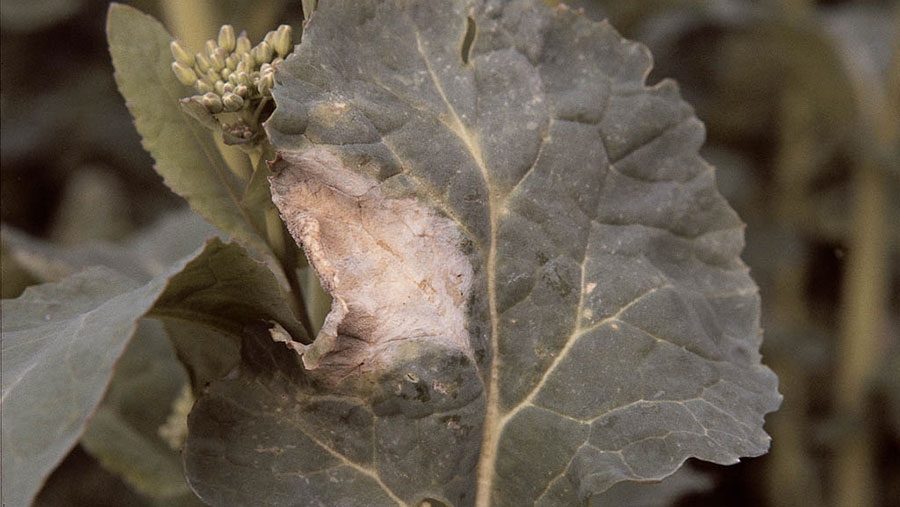Map: High risk of oilseed rape light leaf spot after cool wet summer
 © Bayer CropScience
© Bayer CropScience Oilseed rape crops are at high risk from the crop’s most damaging disease, light leaf spot, after a wet and cool summer, and growers need to check their crops this autumn.
Light leaf spot costs the oilseed rape industry some £140m/year in lost yields, so the high-risk forecast should put growers on alert to get out in the field and check their crops.
Disease forecaster Neal Evans, Europe research lead at Weather Innovations, who works with Rothamsted Research on forecasts, says the summer weather has prompted the high-risk alert.
“The disease has been building up over recent seasons, and the wet and cool summer will have added to this,” Dr Evans tells Farmers Weekly.
See also: Light leaf spot trumps phoma as top oilseed rape disease
He suggests growers get out into the field and take 20 or so plants and incubate them in a plastic bag for a few days to see if the disease’s typical salt crystal-type lesions appear on the leaves.
“The disease has been building up over recent seasons, and the wet and cool summer will have added to this”
Neal Evans
Identification of the disease in growing crops is often difficult because symptoms are not always visible, and can be easily confused with other plant disorders, fertiliser scorch or frost damage.
The Rothamsted disease forecast is based on the incidence of disease on pods at harvest, summer temperatures – with the disease favouring cool weather – and likely winter rainfall.
Dr Evans says the high-risk alert compares with a very high risk last season, with this probably due to inoculum being a little lower this season due to the long cool spring.
The forecast gives a prediction of how much infection growers can expect next spring, with a percentage figure given for the likelihood of a quarter of plants being infected by the disease in the spring.
This season’s prediction shows a 74% likelihood of a quarter of plants being infected in the spring for the north England and Scottish Borders region compared with 91% last season.
South England scores 74% versus 90%, Lincolnshire 73% versus 71%, while the drier East Anglia has lower figures, 31% compared with 37%.
If lesions are seen on the incubated sample plants, then recommended fungicide treatments to control the disease include azole products such as prothioconazole, tebuconazole and difenoconazole.
Rothamsted Research’s preliminary light leaf spot risk forecast for the 2015-16 season
Earlier fungicide treatments used for phoma should give some control of light leaf spot, but experts say this could be a season for two autumn sprays to control both these diseases.
Growers were put on high alert for phoma disease in September after the wet summer, and were advised to spray crops when 10-20% of plants show the disease’s white or fawn-coloured lesions dotted with small black fruiting bodies.
The light leaf spot forecast is updated in the spring using the actual winter rainfall to give growers a guide on whether to use a spring light leaf spot fungicide spray.
Growers can update themselves on the latest disease forecasts on the Rothamsted site’s light leaf spot forecast page , while the forecasters use @LeafSpot to tweet updates to followers.

